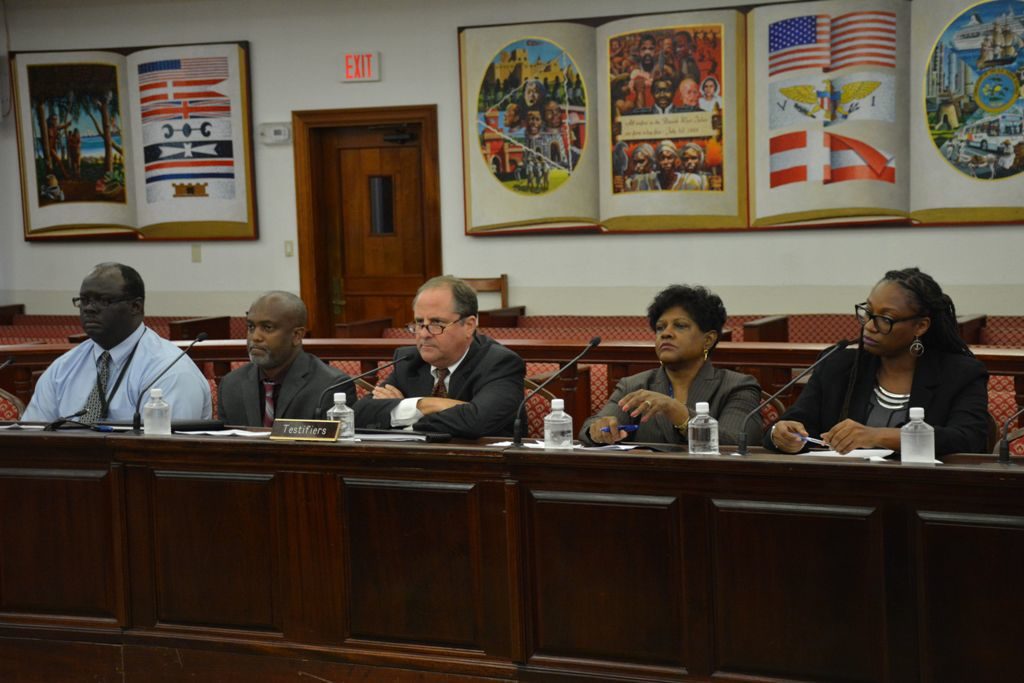CHRISTIANSTED – When the electric power system in the U.S. Virgin Islands is rebuilt, it will be stronger than it has ever been.
The Virgin Islands Water and Power Authority (WAPA), with help from the Federal Emergency Management Agency (FEMA), plans to harden the power grid so it can withstand hurricanes with 200-mile-per-hour winds. Critical transmission lines will be placed underground. A significant number of wooden power poles will be replaced with stronger, composite poles. Power plants, distribution systems, metering systems and equipment will be rebuilt and strengthened.
WAPA Executive Director Lawrence Kupfer said the utility is embracing the federal funding opportunities to not only rebuild its transmission and distribution systems to levels of pre-Irma and pre-Maria, but to develop a robust system that can quickly recover from hurricanes and other windstorm damage.
“Through these projects,” Kupfer said, “we intend to more quickly recover following a disaster and restore service to our customers. Our systems have been rebuilt a number of times following major storm events; now is the opportunity for us to take decisive steps to avoid the levels and cost of rebuilding that we witnessed in 2017.”
After hurricanes Irma and Maria struck, more than 55,000 WAPA customers lost power. The logistical challenges of transporting equipment from the U.S. mainland complicated the response and recovery effort. WAPA set a goal of restoring 90 percent of eligible customers to the power grid by Christmas, and achieved that goal. The remaining customers able to receive electrical hookups were connected by mid-March, 2018.
“This was an ambitious effort,” said Federal Coordinating Officer William Vogel. “It required exceptional coordination among a lot of people.”
WAPA led the restoration effort. FEMA provided funding. Other key participants included the U.S. Department of Energy, Haugland Energy, BBC Electric, mutual aid utilities, other off-island contractors and on-island contractors. More than 800 linemen from the U.S. mainland supported operations on the islands.
The power grid in the USVI was rebuilt after Hurricane Hugo in 1989. Since then, the territory has been hit by Hurricane Marilyn in 1995, Hurricane Bertha in 1996, Hurricane Georges in 1998, Hurricane Lenny in 1999, Tropical Storm Jeanne in 2004, and Tropical Storm Otto in 2010.
WAPA’s plan is to make sure the system is strong enough to withstand even the most powerful hurricanes in the future. The authority will install more durable composite poles along major feeder paths and on primary transmission circuits. In addition, WAPA will begin developing micro electric grids on critical feeders as well as lay out a plan for undergrounding critical electric loads.
As a result of the federal disaster declarations for Irma and Maria, FEMA can reimburse WAPA for eligible costs of reconstruction, including strengthening the system. FEMA’s Public Assistance and Hazard Mitigation programs provide the funding. To date, FEMA Public Assistance has reimbursed WAPA $354,062 million for emergency response efforts. Rebuilding the system is considered permanent work, with FEMA providing at least 75 percent of the eligible costs and the territory providing the remainder.
“Once completed,” Kupfer said, “these projects will go a long way towards enhancing the capabilities of the electric grid and providing WAPA’s customers with more efficient service, especially following a disaster. Our recovery period from the effects of hurricanes and other storms will be greatly reduced.”
###
FEMA’s mission is help people before, during, and after disasters.
Follow us on social media at twitter.com/femaregion2 and www.facebook.com/FEMAUSVirginIslands.




